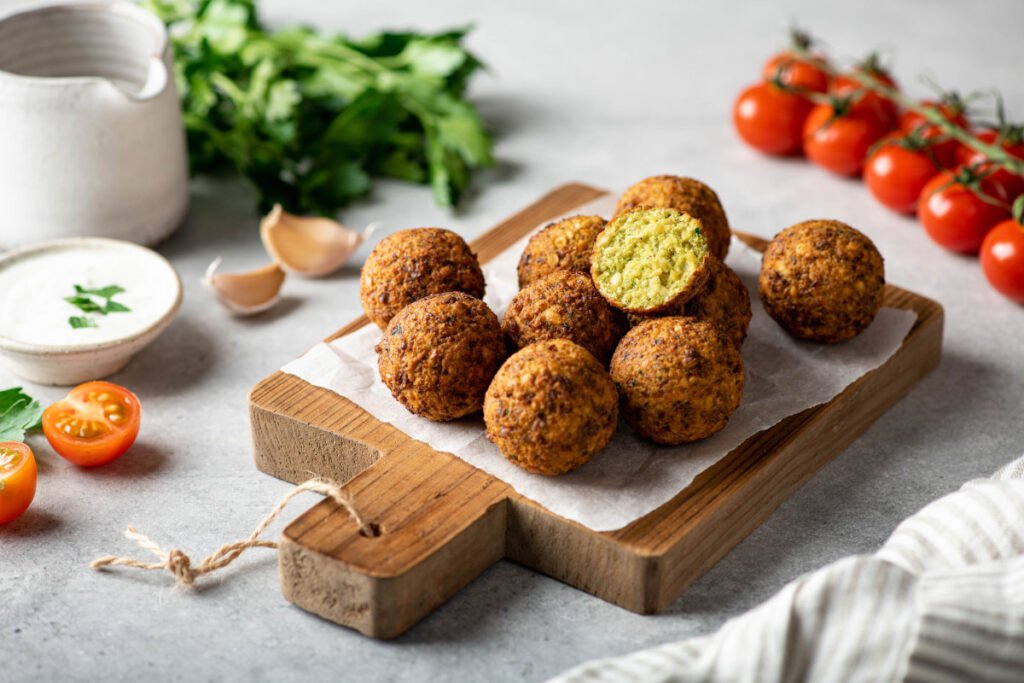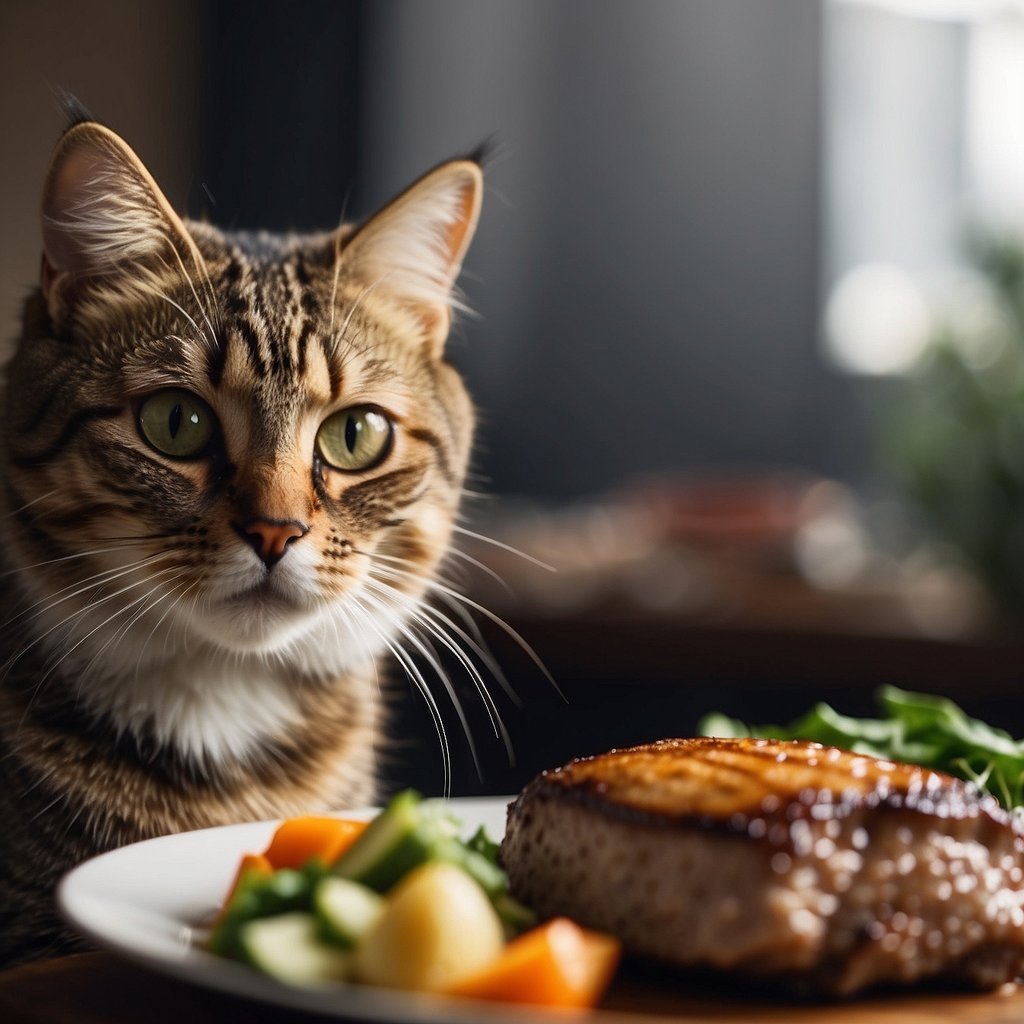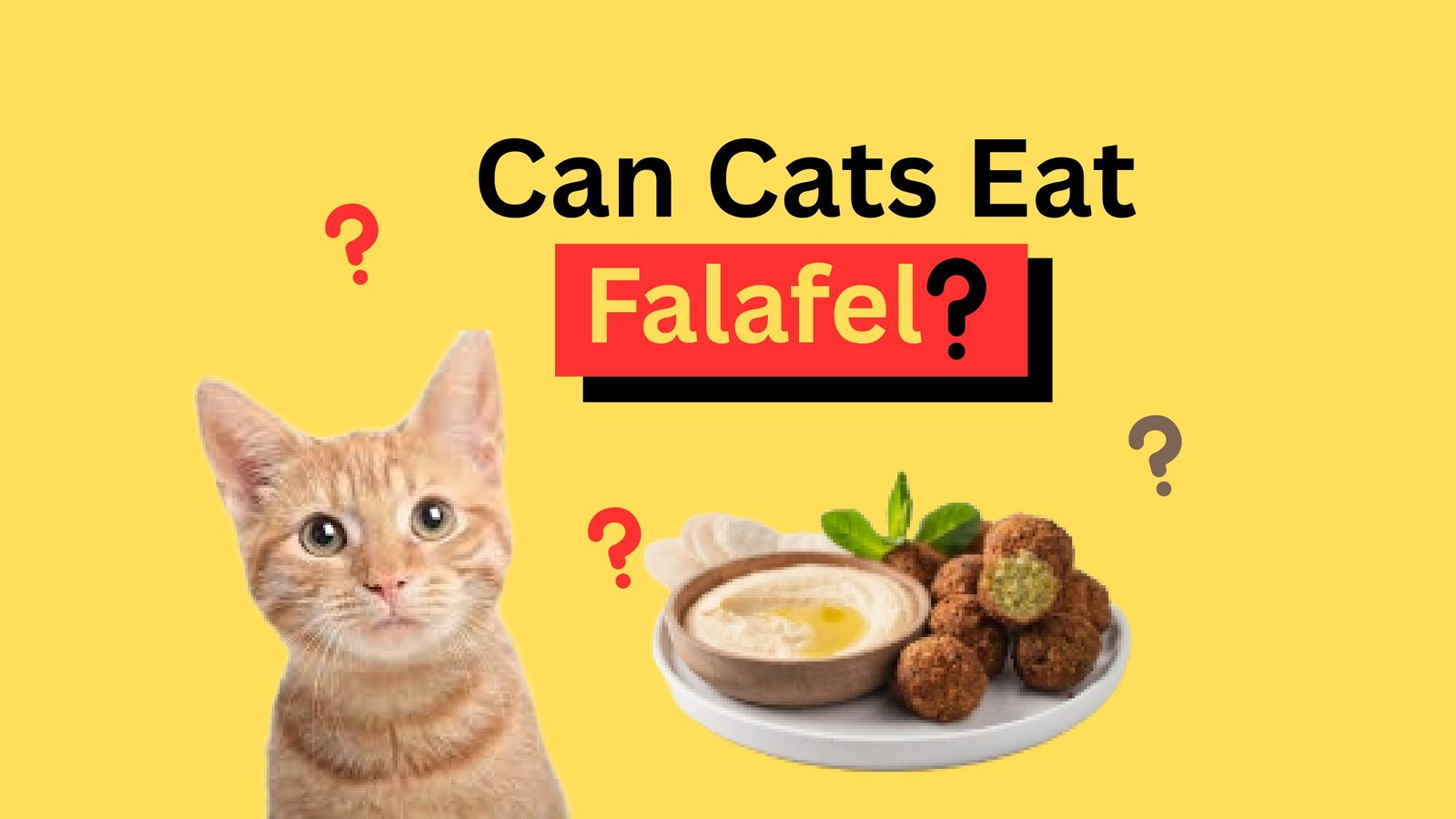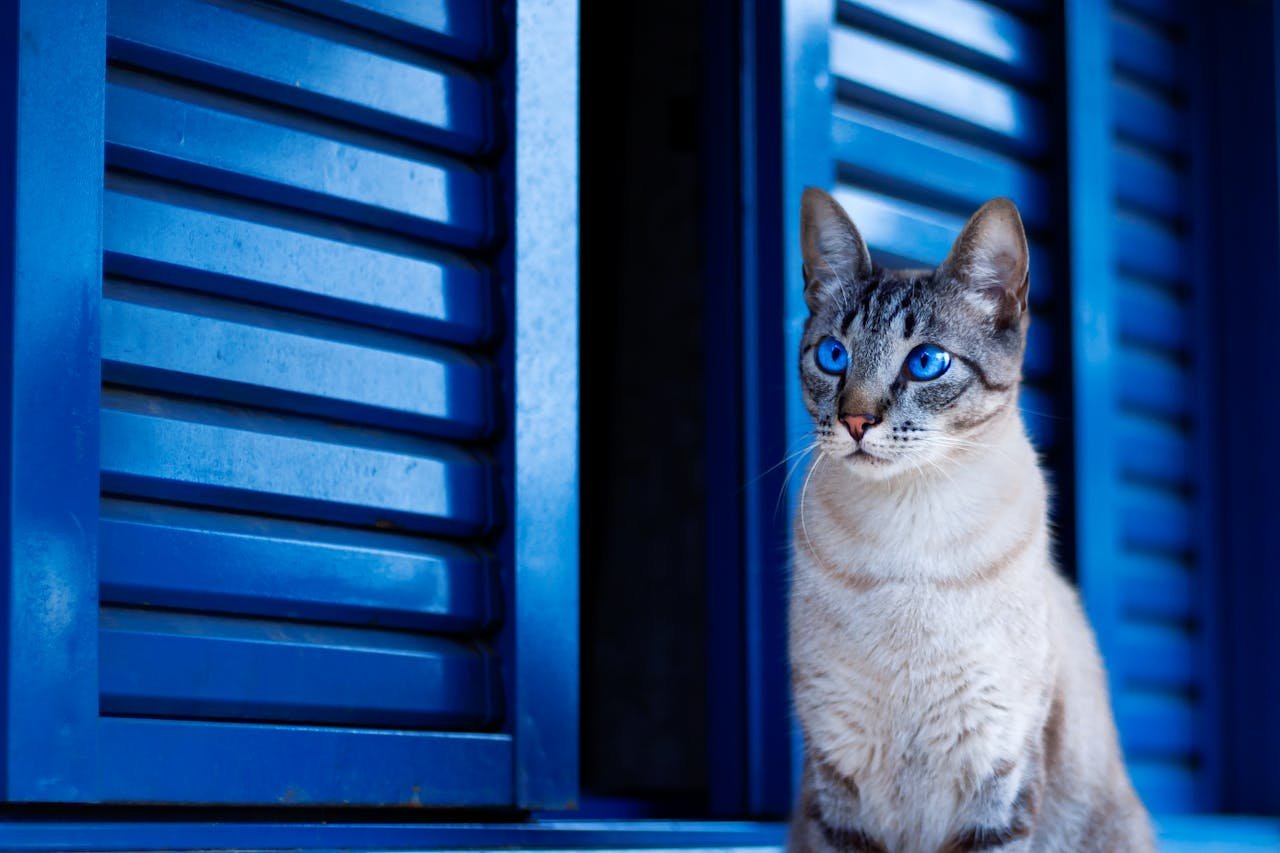Can Cats Eat Falafel Safely or Should You Avoid It? Vet Warnings for 2025
Falafel is more than just a popular Middle Eastern snack—it’s a historical dish with deep cultural and religious roots that have stood the test of time. Believed to have originated in Egypt centuries ago, falafel was first introduced by Coptic Christians as a hearty, plant-based alternative to meat during religious fasts like Lent. Made from ground fava beans or chickpeas, these crispy fritters were rich in protein and nutrients, ideal for maintaining energy while adhering to spiritual dietary laws. As falafel spread across the Middle East, each region gave it a unique twist—chickpeas dominated in Lebanon and Syria, while Egypt stayed loyal to fava beans. But as its popularity grows worldwide, curious pet owners now ask: can cats eat falafel too? Before sharing your snack, it’s crucial to understand how this human favorite may affect feline health.. Over generations, falafel evolved from a spiritual necessity to a cultural emblem, sold in bustling street markets, family kitchens, and high-end restaurants alike. Its appeal lies not only in its delicious crunch and aromatic spices but also in its adaptability; today, falafel has become a global favorite in vegan and vegetarian cuisine, praised for being environmentally friendly, nutritious, and affordable. In a world where health-conscious and plant-based eating are rapidly growing trends in 2025, falafel remains more relevant than ever—a timeless dish that bridges tradition and modern lifestyle. Whether wrapped in warm pita bread, served in grain bowls, or featured on gourmet menus, falafel continues to tell a story of heritage, resilience, and global culinary unity.
What is Falafel?

Falafel is a deep-fried delicacy made from ground legumes—typically chickpeas, fava beans, or a combination of both—and blended with fresh herbs, garlic, onion, and a unique mix of aromatic Middle Eastern spices. Unlike ordinary bean dishes, the legumes used in falafel aren’t cooked first; they’re soaked, finely ground, and seasoned to create a coarse, flavorful dough. This mixture is then hand-shaped into small balls or patties and fried until the exterior turns golden and irresistibly crispy, while the inside stays tender and bursting with flavor. Traditionally enjoyed wrapped in pita bread or served alongside tahini sauce, pickles, and fresh vegetables, falafel has become much more than a simple street food. In 2025, it represents a powerful fusion of cultural heritage and modern dietary trends—especially as plant-based eating gains global momentum. Loved for its high protein content, fiber-rich ingredients, and naturally vegan profile, falafel is now recognized not only for its taste but also for its nutritional value and sustainability. Whether served in traditional Middle Eastern dishes or reimagined in contemporary vegan menus around the world, falafel continues to captivate food lovers across every generation.
Why Falafel Is Unsafe for Your Cat’s Digestive System
Falafel may be a beloved dish for humans, but when it comes to our feline companions, it’s an absolute no-go. Despite its crispy texture and savory aroma, falafel contains a dangerous mix of ingredients that make it entirely unsafe—and potentially fatal—for cats.While these elements may be perfectly healthy for humans, many of them are toxic or highly irritating to cats.
Let’s start with the biggest red flags: onions and garlic. Even in small quantities, both are extremely harmful to cats and can cause oxidative damage to red blood cells, leading to a dangerous condition called hemolytic anemia. Unfortunately, most falafel recipes don’t just contain trace amounts—they rely on these ingredients for flavor. Spices such as cumin, coriander, black pepper, and chili powder are also problematic. Though not always immediately deadly, they can irritate your cat’s gastrointestinal tract, causing symptoms like vomiting, diarrhea, or abdominal pain.
Even chickpeas and fava beans—while less toxic—pose issues for cats.Chickpeas are high in carbohydrates and fiber, which cats cannot efficiently digest. Over time, feeding legumes may lead to nutritional imbalances and digestive discomfort.
Additionally, falafel is deep-fried, which introduces fats and oils that are difficult for a cat’s system to handle. Excess fat can lead to pancreatitis, obesity, and other long-term health issues. No part of a falafel, not even a small bite, is considered safe for feline consumption.
So, while your furry friend might be intrigued by the smell of your lunch, never share falafel with your cat. Instead, treat them with species-appropriate snacks that support their unique nutritional needs. Your cat’s health depends on it.
My Cat Just Ate Falafel—What Should I Do? Urgent Steps Every Cat Owner Must Take
If your cat just snatched a bite of falafel off your plate, don’t panic—but don’t ignore it either. Falafel might be a tasty treat for you, but for cats, it’s a dangerous mix of toxic ingredients like garlic, onions, and spices that can seriously harm their health. The moment you realize your cat has eaten falafel, call your veterinarian immediately. Even if your cat seems fine, some symptoms take hours to develop and may include vomiting, diarrhea, lethargy, and stomach pain.
If you can’t get to a vet right away, call the nearest emergency animal clinic or pet poison helpline for expert guidance based on your cat’s size, age, and how much they may have eaten. Avoid using home remedies or inducing vomiting on your own unless a veterinary professional instructs you to do so. While mild cases may be manageable at home with careful observation, serious toxicity can occur silently and escalate quickly.

Keep your cat calm, restrict their movement, and don’t offer any more food or treats until you receive proper instructions. You should also monitor their breathing, behavior, and litter box activity closely for the next 24 hours. In many cases, early medical intervention can prevent complications and potentially save your cat’s life.
Remember, when it comes to falafel and felines, there’s no such thing as “just one bite.” Always err on the side of caution—and trust your vet to guide you through the next steps safely.
Is Falafel Healthy for Cats? The Truth Behind This Trendy Treat
While falafel may be packed with plant-based protein, fiber, and spices that benefit humans, it is not healthy for cats in any form. In fact, it poses more risks than rewards. Cats are obligate carnivores, which means their bodies are biologically designed to thrive on a diet of meat—not legumes, grains, or herbs. Falafel is primarily made from chickpeas or fava beans, which are difficult for cats to digest and offer little to no nutritional value for them.
But the real danger lies in the added ingredients. Garlic, onion, leeks, and a range of spices commonly used in falafel recipes are toxic to cats, even in small amounts. These can cause serious health problems such as digestive upset, anemia, or even organ damage if ingested regularly or in larger quantities. And since falafel is deep-fried, it also introduces excessive fats and oils into your cat’s system, which can lead to obesity, pancreatitis, or long-term liver issues.
So, while falafel might look and smell appealing to your curious feline, it’s far from a healthy treat. If you want to reward your cat, it’s best to stick to species-appropriate snacks that support their nutritional needs. Think freeze-dried meats, vet-approved cat treats, or even small portions of plain cooked chicken or turkey—no seasonings, no oil, no fillers.
Related Post: Can Cats Eat Sardines in Olive Oil Safely? Quick Facts!
Is Falafel Toxic or Just Unhealthy for Cats?
Understanding the Fine Line Between Harmful and Fatal
Falafel may seem harmless at first glance, but it poses serious risks to cats. While some ingredients are simply difficult for cats to digest, others can be acutely toxic and even life-threatening. Knowing the difference is key to protecting your cat’s health.
Why Cats Can’t Digest Chickpeas and Falafel
Falafel might be packed with plant-based protein and fiber for humans, but it’s completely biologically inappropriate for cats. As obligate carnivores, cats lack the enzymes needed to digest legumes like chickpeas and fava beans. These ingredients can cause bloating, gas, and digestive upset—offering no nutritional benefit to felines.
Harmful Falafel Ingredients That Can Poison Cats
The real danger in falafel isn’t just the legumes—it’s the seasonings. Ingredients like garlic, onions, shallots, and leeks are extremely toxic to cats. These can cause oxidative damage to red blood cells, leading to a condition known as Heinz body anemia, which can be fatal if untreated. Whether raw, cooked, or powdered, these ingredients should be strictly avoided in any form.
The Hidden Dangers of Spices and Frying Oils
Falafel is almost always deep-fried, making it heavy in oils and fats that can overwhelm a cat’s liver. Regular exposure to such rich, greasy foods increases the risk of pancreatitis, obesity, and fatty liver disease.
What If Your Cat Already Ate Falafel?
Symptoms That Should Never Be Ignored
If your cat has accidentally eaten falafel, the situation calls for immediate attention. Falafel often contains harmful ingredients like garlic, onions, salt, and heavy spices—all of which are dangerous to cats even in small amounts. While the chickpeas in falafel are not toxic by themselves, they can still cause gastrointestinal discomfort. The real concern lies in the hidden toxic components that may silently damage your cat’s internal systems. Watch closely for early signs of toxicity, which may include:
- Vomiting
- Drooling
- Diarrhea
- Sudden lethargy or weakness
- Loss of appetite
- Pale gums
- Unusual hiding behavior
- Difficulty breathing or increased heart rate
These symptoms suggest that your cat’s digestive or circulatory system may be compromised, especially if falafel included garlic or onion powder. Even trace amounts of these ingredients can cause oxidative damage to red blood cells, leading to anemia and potential organ stress if not treated promptly.
First-Aid at Home: What You Can Do Before Reaching the Vet
While you’re preparing to contact your vet, make sure your cat is calm and in a safe, quiet space. Offer plenty of fresh, clean water to help flush out any irritants, but avoid giving food or home remedies, as this could worsen the situation. Instead, observe your cat carefully and record what was eaten, how much, and when. This information will help your veterinarian make a faster and more accurate diagnosis.
Prompt action could mean the difference between a quick recovery and long-term health complications. So, even if your cat appears fine, always consult your vet immediately after falafel consumption. Early intervention is critical in preventing internal damage and ensuring your feline companion stays safe and healthy.
Deep-Fried Fats: Unhealthy and Hard to Digest
A Recipe for Pancreatitis and Obesity
One of the biggest risks of falafel lies in how it’s cooked—deep-fried in oil. This high-fat content can overwhelm your cat’s digestive system, leading to pancreatitis, a painful condition that causes inflammation in the pancreas. It can also contribute to rapid weight gain, liver disease, and cholesterol imbalances.
Processed Mixes: Hidden Chemicals and Preservatives
Commercial Falafel Poses Additional Risks
Many packaged or frozen falafel products contain additives, preservatives, flavor enhancers, and excess sodium. These hidden chemicals can interfere with your cat’s internal organs and natural digestion. Ingredients like monosodium glutamate (MSG), binding agents, or synthetic oils can be toxic or cause allergic reactions. Even trace exposure from a tiny bite can trigger kidney stress, dehydration, and internal inflammation.
Can a Small Bite of Falafel Harm Your Cat?

Micro Amounts, Major Impact
Cats are incredibly sensitive to foods that are harmless to humans. Even a tiny piece of falafel can introduce garlic, onion, salt, and spices into your cat’s body—enough to cause digestive distress, blood abnormalities, or worse. Because cats have smaller body sizes and slower toxin processing, even one accidental bite can be enough to spark a veterinary emergency. There is no “safe amount” of falafel for cats.
Warning Signs to Watch For After Ingestion
Early Symptoms of Toxicity in Cats
If your cat accidentally consumes falafel, be alert to signs that may indicate poisoning or distress. These include:
- Lethargy or extreme tiredness
- Vomiting or diarrhea
- Pale gums or yellowing eyes
- Excessive drooling or bad breath
- Lack of appetite or hiding behavior
- Vomiting or drooling
- Diarrhea or soft stools
- Weakness or lack of interest in food
- Excessive hiding or lethargy
- Pale or yellowish gums
- Rapid breathing or trembling
Any of these signs, even mild ones, require immediate attention.
Contact Your Veterinarian Right Away
Even if symptoms haven’t appeared yet, it’s best to call your vet for advice. Describe what happened, how much falafel your cat consumed, and when it occurred. Your vet may suggest bringing your cat in for observation or performing preventive treatments like activated charcoal or IV fluids.
Avoid using home remedies without professional guidance. Substances that are safe for humans—or even dogs—can be fatal to cats. For example, inducing vomiting with hydrogen peroxide is extremely dangerous in felines and should never be attempted at home.
Keep Your Cat Comfortable and Hydrated
Until your vet gives further instructions, keep your cat indoors in a quiet, low-stress area. Encourage hydration by offering small amounts of fresh water. Do not feed your cat any other treats or meals until a vet confirms it’s safe. Food may worsen symptoms or interact with medications your vet may prescribe.
Monitor Closely for 24 to 48 Hours
Your cat’s condition can change rapidly, even if they initially seem fine. Set up a clean, cozy space away from noise, food smells, and distractions. Continue monitoring for delayed symptoms and keep your phone nearby in case an emergency arises.
Safer Alternatives to Falafel for Treating Your Cat
When it comes to treating your feline friend, falafel is not just the wrong choice—it’s a risky one. Loaded with garlic, onions, and heavy seasonings, this popular human food can seriously harm your cat’s delicate digestive system. But worry not—there are far better, healthier, and vet-approved alternatives that offer both flavor and nutritional value without the danger.
Why You Must Ditch Falafel Completely
Cats are obligate carnivores, which means their bodies are not designed to digest chickpeas, garlic, or the complex spices that make up falafel. Even in small quantities, these ingredients can lead to vomiting, diarrhea, anemia, or worse. Instead of risking your cat’s health, shift your focus toward treats that mirror a cat’s natural diet—simple, clean, and meat-based.
Cooked Chicken or Turkey: A Protein-Rich Favorite
Boiled or baked chicken and turkey—served plain without any salt, spices, or oils—are among the safest and most loved cat treats. These meats are high in lean protein, easy to digest, and excellent for supporting muscle growth, immune function, and energy levels. A few small bites of plain chicken can satisfy your cat’s snack craving without compromising their health.
Freeze-Dried Raw Treats: Convenient and Nutritious
Today’s pet stores offer a range of freeze-dried raw treats made from single ingredients like chicken liver, salmon, or duck. These treats contain no harmful additives and retain most of the meat’s natural nutrients. Because they’re shelf-stable, they’re perfect for on-the-go cat parents who want to keep healthy snacks on hand.
Scrambled Eggs or Boiled Eggs (Fully Cooked)
Eggs are a fantastic source of high-quality protein, vitamin D, and B12—all beneficial for feline health. Cooked eggs (never raw) can be given occasionally in tiny amounts. Just be sure there are no seasonings, butter, or milk added, as these can upset your cat’s stomach.
Plain Pumpkin or Mashed Sweet Potato (In Tiny Doses)
For cats struggling with digestion or mild constipation, plain pumpkin or unsalted mashed sweet potato can be a gentle, fiber-rich treat. While not a regular go-to like meat or eggs, these natural options can be used sparingly as a supplement—not a staple.
Vet-Recommended Cat Treats with Purpose
There are many commercial cat treats made specifically to promote better dental health, hairball control, and urinary support. Look for brands that offer grain-free, additive-free, and protein-first ingredients. Choose those with AAFCO certification or that are approved by veterinary nutritionists to ensure quality and safety.
Related Post: Can Cats Have Mandarin Oranges? Expert Warnings 2025
Final Thoughts: Can Cats Eat Falafel? Why the Answer Should Always Be “No”
Can cats eat falafel? While the question seems innocent, the answer carries serious implications for your cat’s health. Falafel contains ingredients like garlic, onions, salt, and spices—all of which are either toxic or harshly irritating to a cat’s digestive system.As cat parents, we must always prioritize what’s species-appropriate over what’s convenient or tempting to share. Falafel may be healthy for humans, but for your cat, it’s a recipe for trouble. Instead of wondering, “Can cats eat falafel?” ask yourself: “Is this food designed for my cat’s body?”
Choosing safe, nutritious, and vet-approved treats isn’t just smart—it’s an act of love. So next time you’re enjoying falafel, remember that your cat deserves something better: a life free from silent threats and full of wellness-driven choices.
FAQs About Can Cats Eat Falafel
Can cats eat falafel?
No, cats should not eat falafel. While this Middle Eastern dish may be healthy for humans, it contains ingredients like garlic, onion, and heavy spices that are toxic to cats and can lead to serious health issues.
Is falafel toxic or just unhealthy for cats?
Falafel is both. It’s toxic because of ingredients like garlic and onion, and it’s unhealthy due to its fried texture, legumes, and spices that can upset a cat’s digestive system—even in small amounts.
What happens if my cat accidentally eats falafel?
If your cat takes a bite, observe closely. Watch for signs like vomiting, diarrhea, drooling, or unusual tiredness. If any symptoms appear within hours, contact your vet immediately.
Are chickpeas in falafel okay for cats?
Chickpeas are not toxic but are not ideal for feline digestion. Cats are obligate carnivores and don’t benefit from legumes like humans do. Chickpeas may cause gas or mild stomach upset.
What should I feed my cat instead of falafel?
Opt for vet-approved treats like cooked chicken, turkey, or freeze-dried meat snacks. These provide real nutrition and are much safer than seasoned human foods.
For More Visits: SiameseMania
Also Read: Can Cats Eat chicken gizzards Safely? 2025 Expert Breakdown

